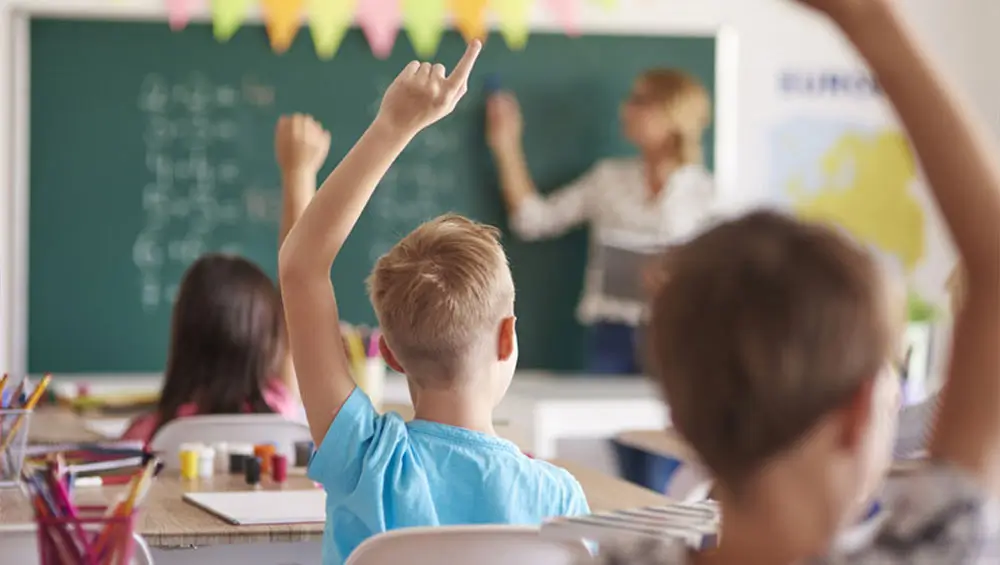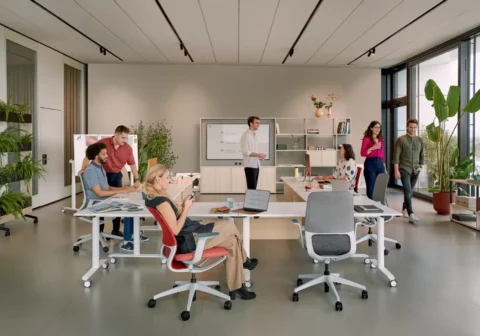
Blog
The classroom furniture of the future

Based on the latest research, the next big trend in education is learning with both brain and body (LEARN BNB). Experts agree: physical movement doesn’t just support learning—it enhances it. Modern classrooms and teaching methods must adapt. Stimulating the brain alone is no longer enough; the whole body needs to be engaged.
Physical Activity: Essential for Better Learning
Studies show that 68% of students in the European Union are physically inactive. The situation in Macedonia is likely even worse, but the future looks bright. Designers of classroom spaces and furniture are increasingly integrating full-body movement into education. Learning BNB is more than a trend—it’s a game-changer for classrooms. Movement improves cognitive performance and makes intellectual learning more effective. From classrooms converted into sports zones to quiet reflective areas, schools are beginning to embrace dynamic learning environments.
“Physical activity not only improves children’s health but also enhances their short- and long-term cognitive and mental abilities. Schools have a unique opportunity to influence students’ activity levels and promote lifelong healthy habits.”
How Macedonia designs its classrooms today will directly impact its global competitiveness in 20 years.
Technology Meets Interior Design
Learning BNB challenges designers of modern classrooms to rethink every detail, from movable furniture to soft flooring that encourages movement. Technology also supports this shift—sensors can adjust furniture positions and encourage students to move after long periods of sitting. Classrooms become dynamic, flexible spaces tailored to the needs of individuals, groups, and various learning styles.
“Just as modern workplaces use furniture to promote movement, classrooms are adapting to prevent students from sitting in static positions. Demand is rising for mobile/flexible furniture, sound-absorbing materials, and chairs that allow movement without noise.”
5 Tips for Designing an Active Classroom
- Brain Breaks – Short activity breaks that students can do without any equipment.
- Classroom as Gym – Areas within or near the classroom equipped for guided movement exercises.
- Standing Desks – Encourage students to alternate between sitting and standing.
- Mobile Furniture – Lightweight, wheeled furniture that can be reconfigured for group or individual work.
- Writable Surfaces – Walls and boards that inspire movement, collaboration, and creativity.
Meeting Students’ Needs
If workplaces constantly evolve, shouldn’t we do the same for schools? Modern classroom design combines ergonomics, flexibility, and creativity. In many schools, however, time has stood still. Macedonian classrooms remain largely unchanged for the past 100 years: rows of desks facing the board, with minimal adaptation for diverse learning needs.
The most effective classrooms are flexible, allowing students to move, choose their preferred learning style, and engage in both individual and collaborative work. For example, reading on a soft couch or carpet can be more effective than sitting on a rigid wooden chair. Students vary—some prefer low seats, some high; some need privacy, some thrive in groups. Modern classroom design recognizes these differences and empowers every child to learn in the style that suits them best.
“Forcing students to conform to a static classroom during their most formative years can suppress individuality and leadership potential.”
Walls Matter
Research shows students feel more comfortable with walls behind them or sitting in corners. Classrooms can be divided into zones using panels, textiles, high-back chairs, or rolling storage units. Even hallways and cafeterias can be reimagined as active learning spaces that promote spontaneous interaction and collaboration.
Can Furniture Influence Learning?
Absolutely. Smart classroom furniture integrates movement and flexibility into everyday learning. Standing desks encourage students to generate up to 27% more ideas compared to sitting. Mobile desks and chairs allow easy reconfiguration for group or individual work. Quiet rocking chairs or soft-floor seating reduce noise while supporting movement.
“Sitting has been declared the disease of the 21st century. Let’s give our children healthy environments for learning.”
By designing classrooms that encourage movement, creativity, and comfort, we prepare students not just to learn—but to thrive.
